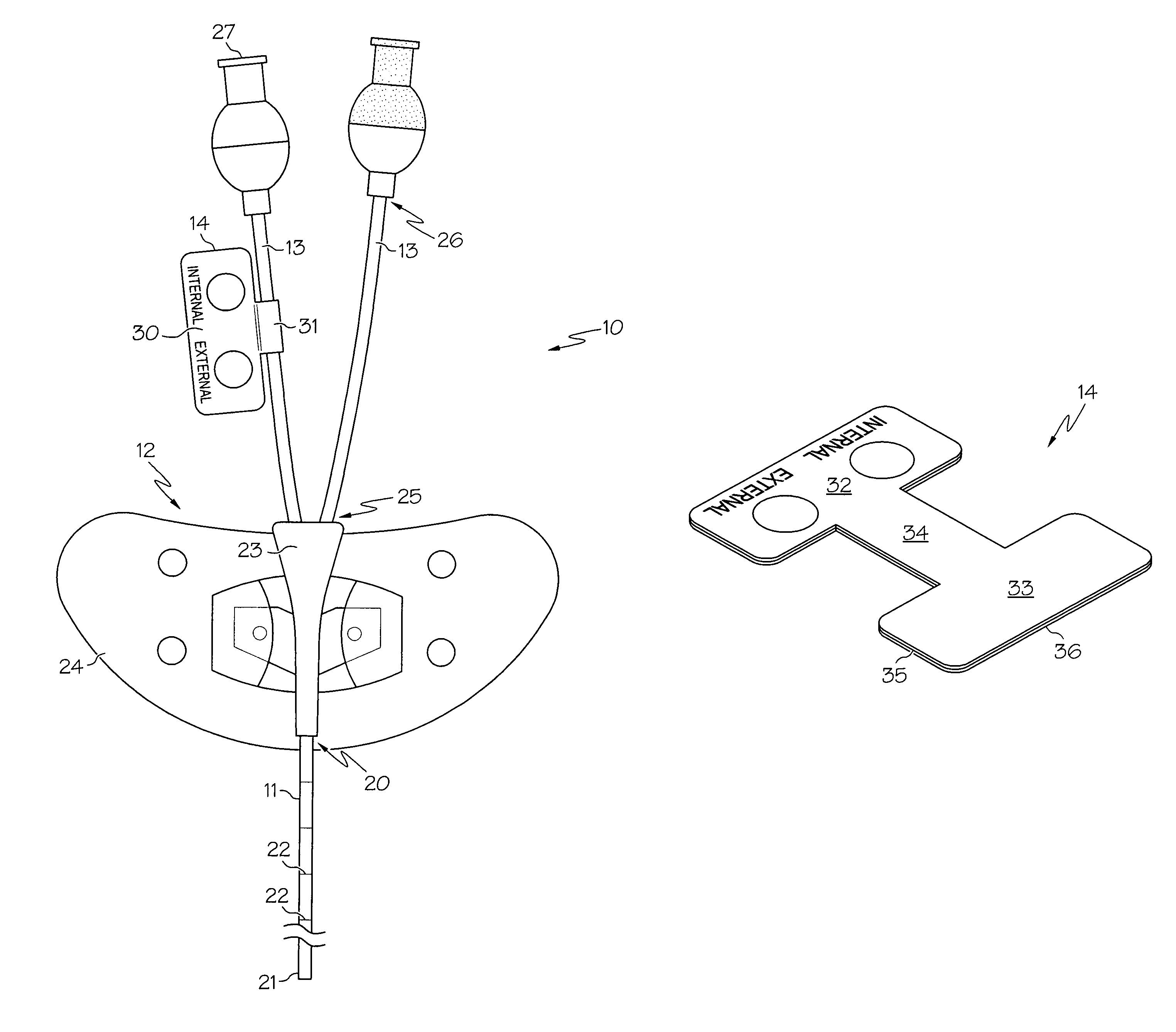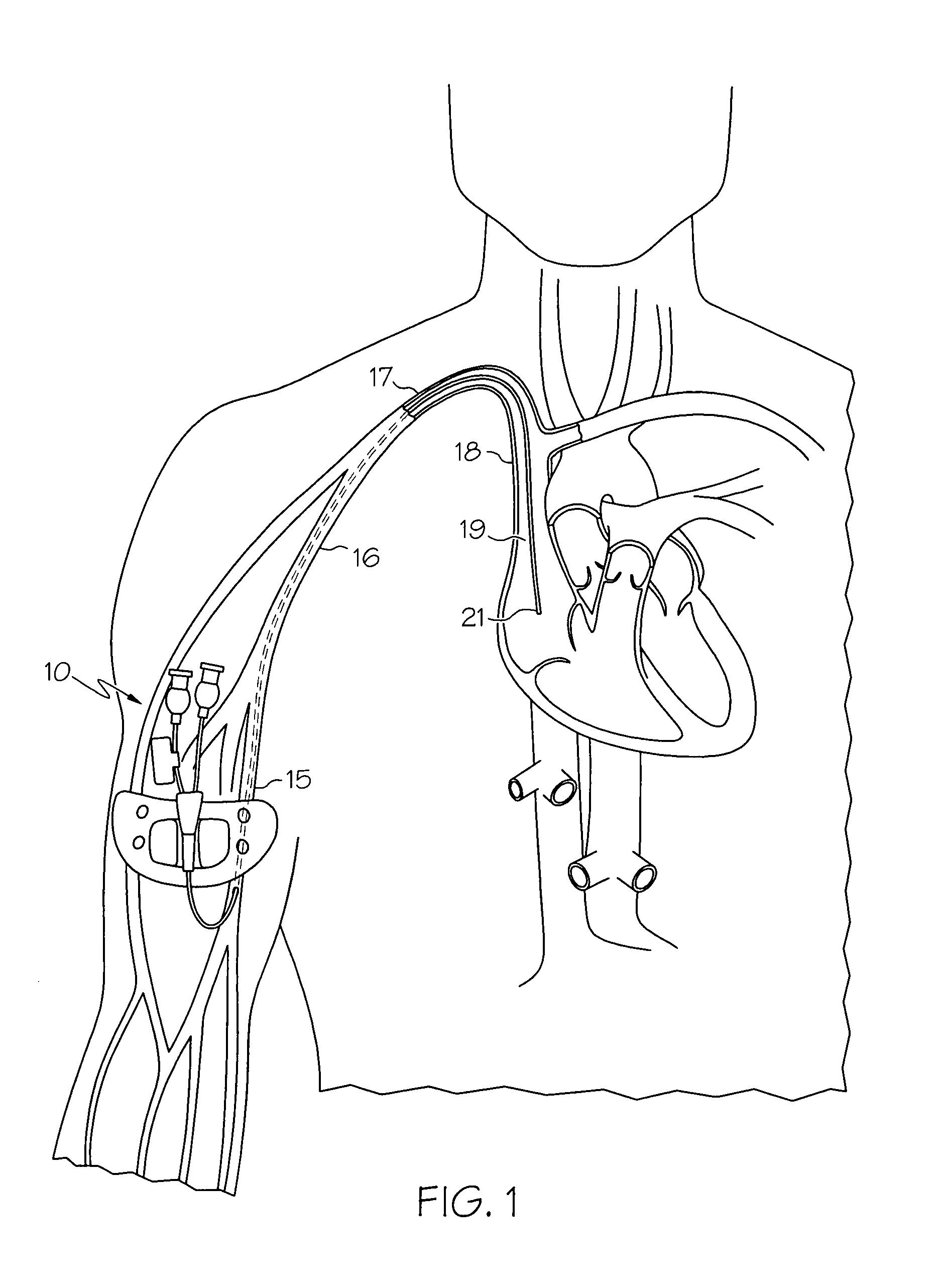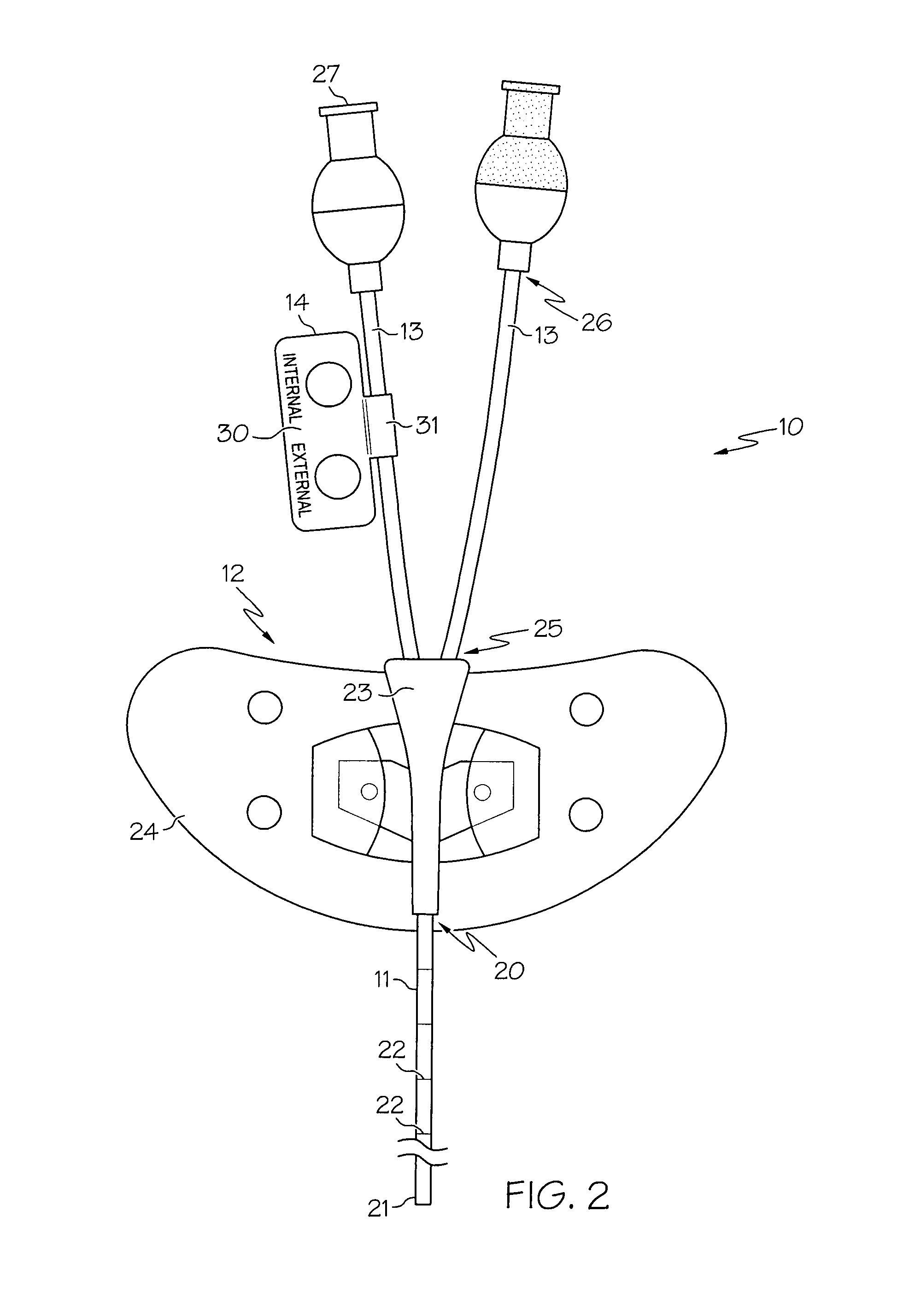Catheter with position indicator
a catheter and position indicator technology, applied in the field of catheters with position indicators, can solve the problems of loosening the adhesive of the dressing, causing a degree of “play” or instability, and inadmissible to tape the catheter to the patient at the entry point into the body
- Summary
- Abstract
- Description
- Claims
- Application Information
AI Technical Summary
Benefits of technology
Problems solved by technology
Method used
Image
Examples
Embodiment Construction
[0016]The peripherally inserted central venous catheter (PICC) of the invention and a method of monitoring initial placement of the PICC in a patient's superior vena cava for movement using the PICC of the invention are described in detail in the following paragraphs. The PICC is primarily used for dispensing medications through the catheter directly into a patient's superior vena cava. The medications can be part of a long-term chemotherapy regimen, extended antibiotic treatment, or long-term medicinal regimen. The PICC can as well be used for supplying total parenteral nutrition to the patient, providing a means of venous access, and withdrawing blood for testing.
[0017]With reference to FIG. 1, there is depicted an upper portion of a human body in schematic form with the PICC 10 of the invention in position. Components of the PICC 10 are described in detail below as is a method of monitoring catheter tip placement using the PICC 10. Briefly and with reference to FIG. 2, the PICC 1...
PUM
 Login to View More
Login to View More Abstract
Description
Claims
Application Information
 Login to View More
Login to View More - R&D
- Intellectual Property
- Life Sciences
- Materials
- Tech Scout
- Unparalleled Data Quality
- Higher Quality Content
- 60% Fewer Hallucinations
Browse by: Latest US Patents, China's latest patents, Technical Efficacy Thesaurus, Application Domain, Technology Topic, Popular Technical Reports.
© 2025 PatSnap. All rights reserved.Legal|Privacy policy|Modern Slavery Act Transparency Statement|Sitemap|About US| Contact US: help@patsnap.com



